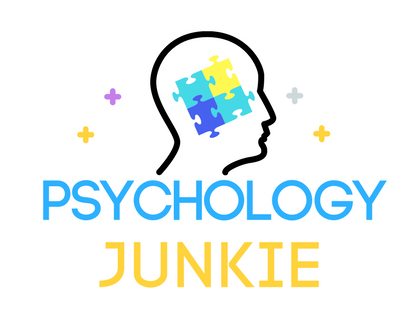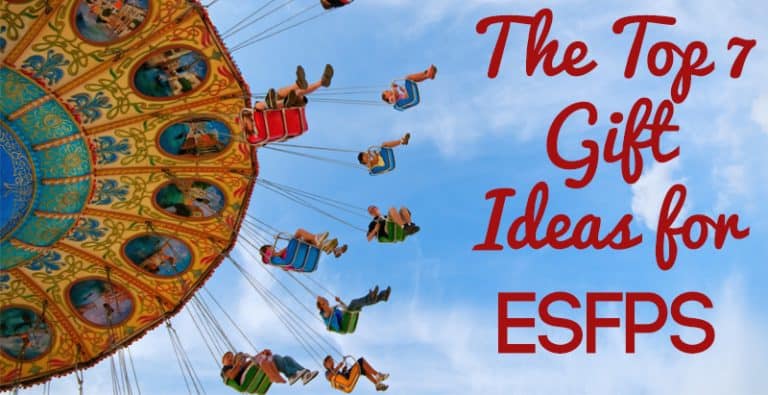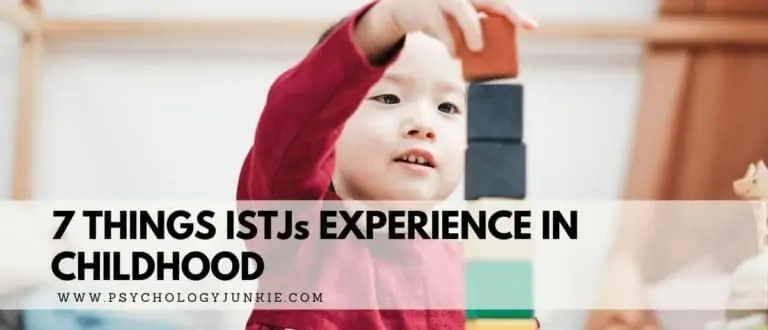Here’s How You See the World, Based On Your Personality Type
Each of us takes in data and information differently and in a way that is unique to our personality type. Some people are really in tune with their inner-body sensations, others are more in tune with where they are in space! How do you see the world? How do you collect information? We’ll find out in this article!
Not sure what your personality type is? Take our new personality questionnaire here. Or you can take the official MBTI® here.

Here’s How You See the World, Based On Your Personality Type
ENFPs, ENTPs, INFPs, and INTPs
These four types are less concerned with collecting details and more concerned with seeing patterns, connections, and interrelationships. They don’t notice the literal details of the world around them, or at least they don’t focus on them. They see the endless potentialities of an object, idea, or relationship. They see what could be.
NPs also can see unusual connections between things. For example, “how is a nose like a car?” well…a nose has two nostrils and a car has two sources for power (electricity and fuel). These random connections come quickly and effortlessly to NPs but stump many other types. The ability to make random connections may seem meaningless to other types, but it allows NPs to find creative solutions, ideas, and possibilities that other people bypass without realizing it.
NPs are intensely creative, imaginative, and innovative. The main downside to their way of processing the world is that they can always see “greener pastures” in the future, but feel discontented with the present moment. The future and what could be is always more exciting than now and what “is”.
ENFPs and INFPs are also guided by a process called introverted Feeling (Fi). This makes them tuned into authenticity, congruency of values, hypocrisy or lack thereof. It makes them aware of possibilities that will have positive impacts for people or causes they believe in. They are often crusaders for what is right, even if it is risky or seen as going against the status quo.
ENTPs and INTPs are also guided by a process called introverted Thinking (Ti). This makes them tuned into cause and effect, logical consistencies or inconsistencies, and how systems fit together. They are aware of possibilities for troubleshooting and problem-solving. They are always creating mental blueprints and trying to fill “holes” in their models with logical data.
ESFPs, ESTPs, ISFPs, and ISTPs
These four types are what I like to call the “ultimate realists”. A tree is a tree is a tree. They notice in high-definition detail all the things surrounding them, without transmitting their past impressions or their biases onto them. They notice vivid details that other people miss and they respond to incoming data quickly. They are constantly scanning their environment for specific, indisputable, factual data. They are aware of aesthetics, and they can apply total attention to what is happening in the moment without getting distracted or “stuck in their head”.
This tends to make SPs adaptable, quick to respond, and extremely practical. They also tend to have artistic or creative tendencies because they are so stimulated by aesthetic beauty or ways to make objects more functional. For example, my ESTP husband is always trying to build new devices and objects that will make life more efficient.
The downside to extraverted sensing is that these four types can become so consumed by what’s happening in the moment that they lose sight of future implications.
ESFPs and ISFPs are also guided by a process called introverted Feeling (Fi). This makes them tuned into authenticity, congruency of values, hypocrisy or lack thereof. They try to find realistic, actionable ways to achieve their personal values and make a difference for people. They are good at fighting for a cause they believe in and creatively expressing their values through art, dance, or hands-on helping career fields.
ESTPs and ISTPs are also guided by a process called introverted Thinking (Ti). This makes them tuned into cause and effect, logical consistencies or inconsistencies, and how systems fit together. They can quickly size up a situation and find practical ways to solve problems and troubleshoot. They are always expanding their mental framework of how the world works and attempting to find the most accurate data.
INTJs, INFJs, ENTJs, and ENFJs
These four types are always looking to see how ideas and objects fit into the overall scheme of existence. “How will things ultimately be?” is a question that is constantly on their mind. They are less tuned into their environment, and more tuned into abstract ideas, images, and/or conceptualizations. They tend to apply symbolic meaning to reality – not seeing something for what it is, but turning it into a symbol that has an underlying meaning or significance for them. INFJs and INTJs are also gifted at seeing many perspectives – they shift perspectives regularly, trying to see which one is the truest. This gives them a gift for understanding the underlying meanings and patterns in other people’s behavior.
The potential downside to this function is that NJs can become so focused on future outcomes and potentialities that they lose sight of what’s happening around them in the moment. This is a stumbling block for all intuitive types who can get so focused on “then” that they forget to notice “now”.
INFJs and ENFJs are also guided by a process called extraverted Feeling (Fe). This makes them tuned into the emotions, needs, and desires of the people around them. They are usually tuned into what’s expected socially or what’s appropriate or tactful. They are highly empathetic and conscientious people.
INTJs and ENTJS are also guided by a process called extraverted Thinking (Te). This makes them tuned into objective logic, flaws in systems, inefficiencies, and errors. As a result, they are quick to fix inefficiencies and are skilled at creating structured, workable plans. They are good at analyzing pros and cons and finding the most logical solutions to problems. They are also good at organizing people and the outer world to achieve end-results in a timely manner.
ISTJs, ISFJs, ESTJs, and ESFJs
These four types are very aware of the details around them and how external experiences and details make them feel inside. What brings comfort? What increases or decreases energy? What causes an internal conflict? How is the world around them impacting them in a deep, internal manner. These two types are also skilled at comparing and contrasting. They might be the first to notice if the decor has changed in a room, or if someone’s demeanor seems more uneasy than usual. They notice patterns shifting and changing and they notice how something feels different now than it did before. For example, they might notice a favorite meal has a very slight difference in flavor or texture from the last time they had it. Their ability to notice these things allows them to create comfort for themselves and others. It also gives them a skill for recalling past lessons and information that can solve current or future problems.
The potential downside to this way of seeing the world is that SJs can become so focused on what has always worked for them or what’s comfortable that they forget to try things in new, innovative ways.
ISFJs and ESFJs are also guided by a process called extraverted Feeling (Fe). This makes them tuned into the emotions, needs, and desires of the people around them. They are usually tuned into what’s expected socially or what’s appropriate or tactful. They are highly empathetic and conscientious as a result.
ISTJs and ESTJs are also guided by a process called Extraverted Thinking (Te). This makes them tuned into objective logic, inefficiencies, and errors. As a result, they are quick to fix inefficiencies and are skilled at creating structured, workable plans. They can logically determine sequences and priorities needed to get a task done on time.
What Are Your Thoughts?
Has this article helped you to understand yourself or someone you know in a better way? Has it confused you even more? Let me know! Want to connect with me personally? Be sure to follow me on my Facebook page!
Find out more about your personality type in our eBook, Discovering You: Unlocking the Power of Personality Type.
Other Articles You Might Enjoy:
Here’s What Gives You Peace of Mind, Based On Your Personality Type
Here’s What Overwhelms You, Based On Your Personality Type
Here’s the Kind of Enemy You’d Be, Based On Your Personality Type
Here’s What Embarrasses You, Based On Your Personality Type














FYI: Typo – top of 1st section header 😉
Im an ENTP and gosh this is sooo true. Like my aunt bought a clock 7 years ago and yesterday i congraduelated her new clock. Or i didnt notice she changed her rugs untill i spend like 3 hours at her’s.
And also present always sucks and i just have this big dreams for my future in my head
The first one says INFP twice.
Thanks for letting me know! I fixed it 🙂
The planet is a wonder with all we need.Yet greed and jealousy rules. We covet what is not ours
We destroy rather than share.
Why do we suffer ? Is it because we cannot see an objective !! It is not true of us all.
Meaning is important but how do you understand it.?????
I worked with many ESTPs during many years.
I noticed that ETSPs were less focused on detail than ISTPs. They are less sensitive to nuance, this for a quick synthesis. For example, two similar but different objects will become identical, even if they are not. I think it comes from the fact that they are best able to lead an STPs cooperative action in a relatively short time with imposed external conditions. This delay can be a few weeks or a few hours…
But the fact is they have a talent for organizing and maintaining an overall team vision. I think Dominant Extravert Sensation should not say more accuracy, but a larger view of opportunities in the immediate world.
Can you realize in the future, an article with the evolution of the cognitive functions, by advancing models, with personalities examples? Not just the theory.
lol, I m banned? (predictable) Your nature is a bit tyrannical … You only want good ratings, without critical thought. Bye Daenerys…
Banned? I’m sorry, I don’t know what you’re talking about. I haven’t banned anyone?
Sorry a connection problem